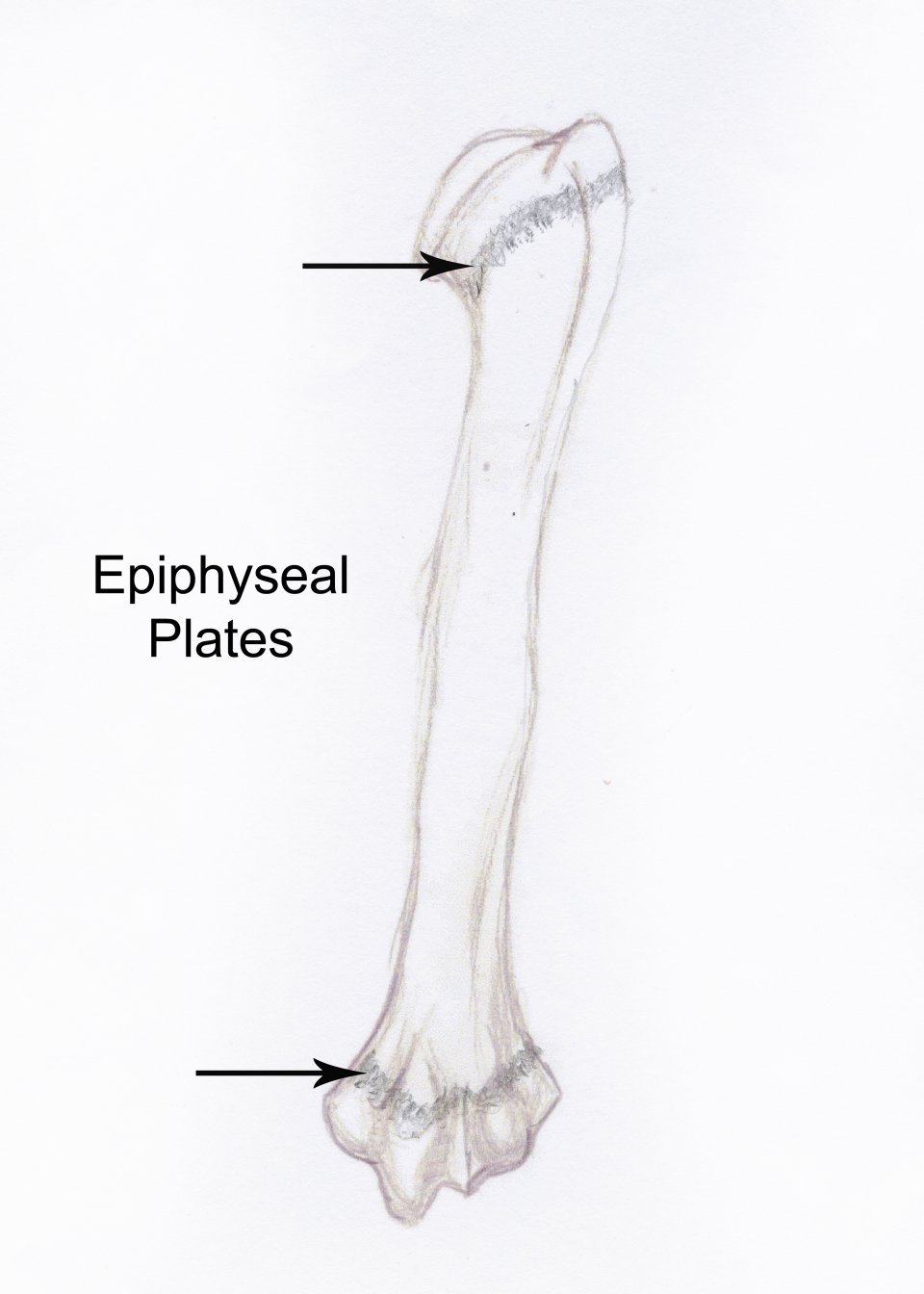The primary difference between the adult long bone and the young long bone is the epiphyseal plate as shown in the illustration below. This plate is the origin of growth in length of the long lone to approximately age 18-24 years. After this, the epiphyseal plate becomes an inactive epiphyseal line. Since the epiphyseal plate is the growth center, any disturbance of its integrity might disrupt normal growth of that bone. Examples of this disruption might be a tumor, infection or trauma. The primary focus of this section will be to examine injuries to the long bones of the young patient involving the epiphyseal plate.
These injuries are classified according to the Salter-Harris Classiification I, II, III, IV, and V.
Illustration 43 Anatomy of the Young Long Bone
. . . now let us demonstrate by artist sketch each of these classifications
click on
” NEXT ”
As you review these classifications please take note of their frequency of occurrence and their prognosis.

